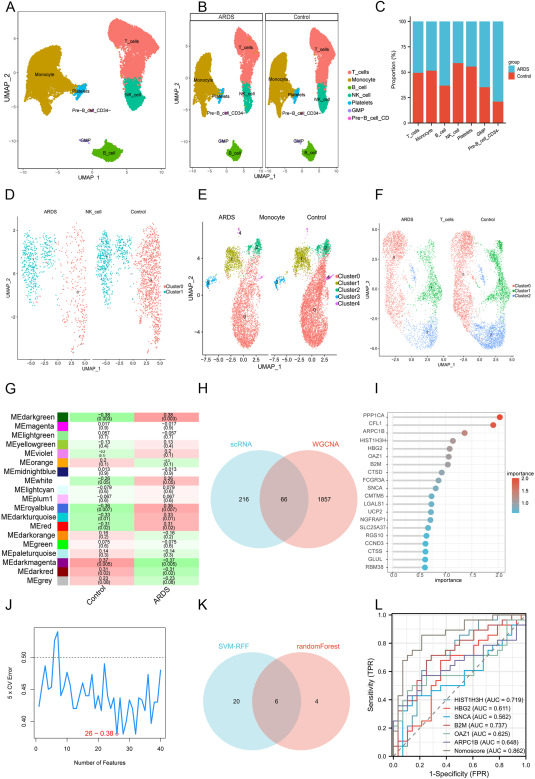
Integrating single-cell RNA sequencing and bulk RNA sequencing data to predict acute respiratory distress syndrome in sepsis patients


Sepsis affects approximately 20%–30% of patients admitted to the intensive care unit.1 Acute respiratory distress syndrome (ARDS) is recognized as one of the earliest and most common complications of sepsis, occurring when sepsis triggers a systemic infection and provokes an uncontrolled inflammatory response that can lead to severe lung damage.2 Studies have demonstrated that patients with sepsis-induced ARDS face not only a mortality risk ranging from 30% to 40%3 but also long-term outcomes such as cognitive impairment and memory loss.4 Moreover, patients with sepsis-associated ARDS have a higher mortality rate compared with those with ARDS caused by other factors and tend to have suboptimal treatment outcomes once ARDS develops.5 Therefore, early identification and treatment initiation are crucial to prevent ARDS in sepsis, reduce mortality, and minimize healthcare costs. In this study, we aimed to develop a predictive model for assessing the likelihood of ARDS development in sepsis patients by integrating bulk RNA sequencing and single-cell RNA sequencing data (materials & methods can be found in supplementary data).
